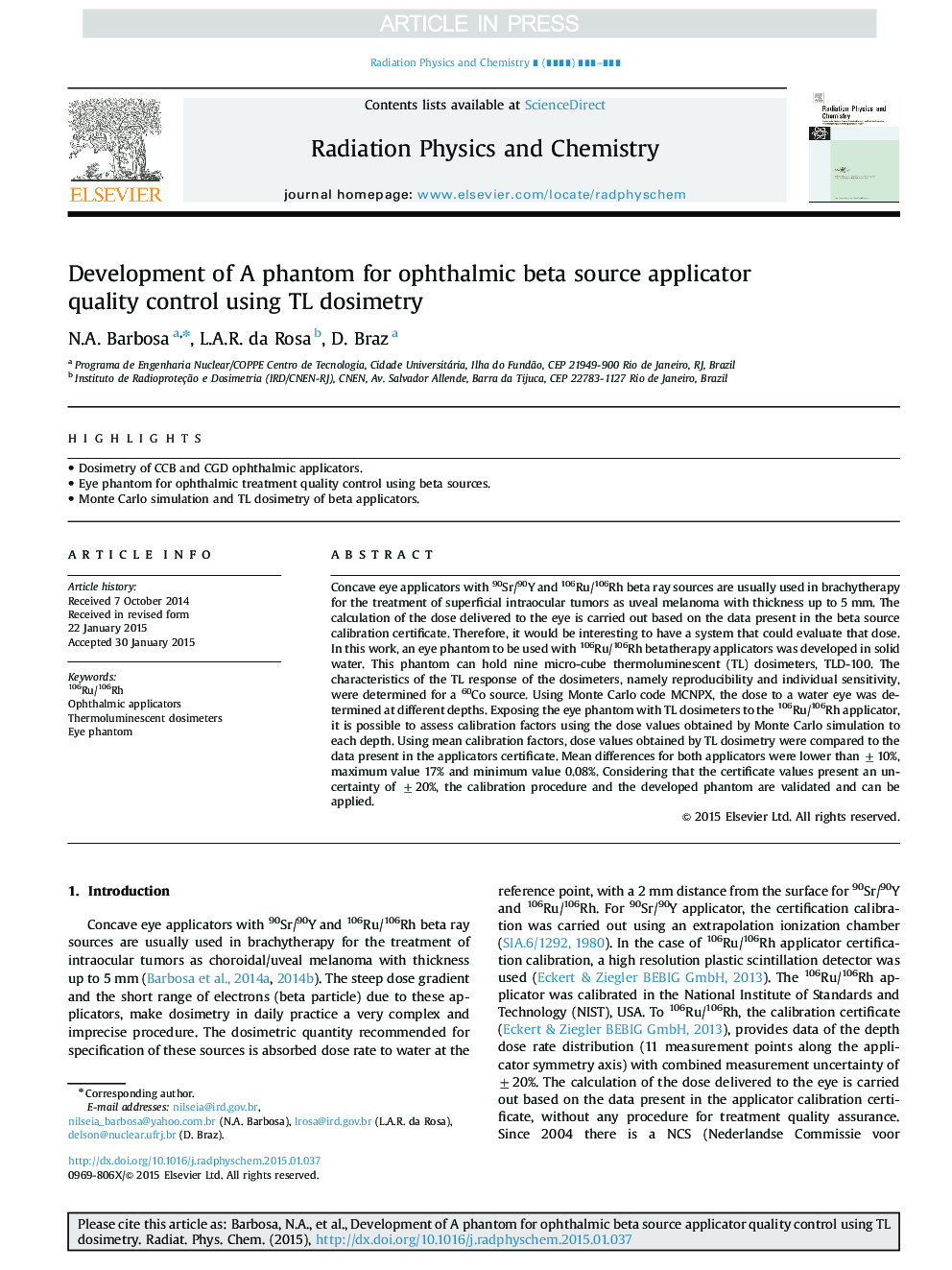| Article ID | Journal | Published Year | Pages | File Type |
|---|---|---|---|---|
| 8252736 | Radiation Physics and Chemistry | 2015 | 5 Pages |
Abstract
Concave eye applicators with 90Sr/90Y and 106Ru/106Rh beta ray sources are usually used in brachytherapy for the treatment of superficial intraocular tumors as uveal melanoma with thickness up to 5 mm. The calculation of the dose delivered to the eye is carried out based on the data present in the beta source calibration certificate. Therefore, it would be interesting to have a system that could evaluate that dose. In this work, an eye phantom to be used with 106Ru/106Rh betatherapy applicators was developed in solid water. This phantom can hold nine micro-cube thermoluminescent (TL) dosimeters, TLD-100. The characteristics of the TL response of the dosimeters, namely reproducibility and individual sensitivity, were determined for a 60Co source. Using Monte Carlo code MCNPX, the dose to a water eye was determined at different depths. Exposing the eye phantom with TL dosimeters to the 106Ru/106Rh applicator, it is possible to assess calibration factors using the dose values obtained by Monte Carlo simulation to each depth. Using mean calibration factors, dose values obtained by TL dosimetry were compared to the data present in the applicators certificate. Mean differences for both applicators were lower than ±10%, maximum value 17% and minimum value 0.08%. Considering that the certificate values present an uncertainty of ±20%, the calibration procedure and the developed phantom are validated and can be applied.
Related Topics
Physical Sciences and Engineering
Physics and Astronomy
Radiation
Authors
N.A. Barbosa, L.A.R. da Rosa, D. Braz,
